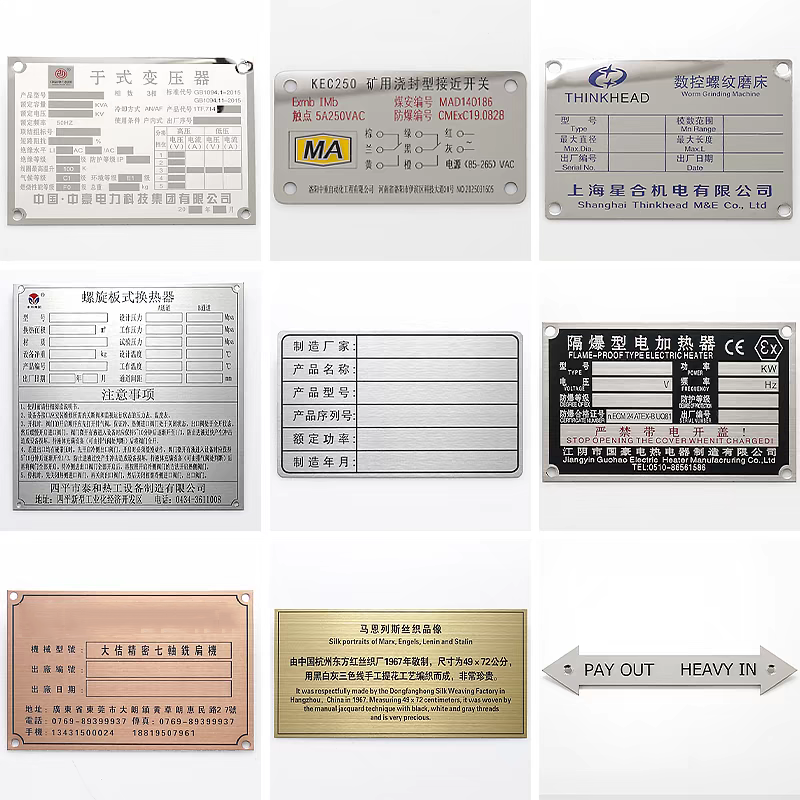In today's fast-paced business environment, managing inventory effectively is crucial for success. Traditional methods, often reliant on manual counts and paper-based systems, are prone to errors, inefficiencies, and delays. This is where electronic inventory tags come into play, offering a transformative solution for businesses of all sizes. These smart tags are revolutionizing how companies track, manage, and optimize their stock levels. This article delves into the core aspects of electronic inventory tags, explaining their functionality, benefits, and real-world applications to help you understand why they are becoming an indispensable tool in modern logistics and retail.

What Are Electronic Inventory Tags?
Electronic inventory tags are advanced, digital devices used to identify and track inventory items automatically. Unlike traditional barcode labels or handwritten tags, these electronic versions contain microchips and antennas that can store and transmit data wirelessly. The most common types include Radio-Frequency Identification (RFID) tags, Near Field Communication (NFC) tags, and Electronic Shelf Labels (ESLs). These tags are typically attached to products, pallets, or shelves and interact with readers or scanners to provide real-time data on item location, quantity, and status. The primary purpose of electronic inventory tags is to enhance accuracy, reduce manual labor, and provide instant visibility into inventory levels across the supply chain. By digitizing inventory management, businesses can minimize stockouts, prevent overstocking, and improve overall operational efficiency. The adoption of electronic inventory tags is growing rapidly in sectors like retail, warehousing, and manufacturing, where precise inventory control is paramount.
How Do Electronic Inventory Tags Function?
The operation of electronic inventory tags is rooted in wireless communication technologies. At its core, an electronic inventory tag consists of a small integrated circuit (chip) for storing data and an antenna for receiving and transmitting signals. When a reader device emits a radio frequency signal, it powers the tag (in the case of passive tags) or activates it (for active tags), prompting the tag to send back its stored information. This data can include unique identification numbers, product details, batch numbers, or even sensor readings like temperature or humidity. For instance, in an RFID-based system, readers placed at strategic points—such as warehouse entrances or store shelves—can scan multiple electronic inventory tags simultaneously without requiring a direct line of sight. This enables rapid, bulk scanning of items, significantly speeding up processes like receiving, picking, and cycle counting. The collected data is then integrated into inventory management software, providing a centralized dashboard for monitoring stock levels in real time. This seamless flow of information eliminates the need for manual data entry, reducing human error and ensuring that inventory records are always up-to-date.
Key Advantages of Implementing Electronic Inventory Tags
The shift to electronic inventory tags brings a multitude of benefits that directly impact a company's bottom line. First and foremost, they drastically improve inventory accuracy. Studies show that manual inventory counts can have error rates of up to 15%, whereas systems using electronic inventory tags can achieve accuracy levels above 99%. This precision helps in reducing instances of stockouts and overstocking, leading to better customer satisfaction and lower holding costs. Secondly, electronic inventory tags enhance operational efficiency by automating routine tasks. For example, employees no longer need to spend hours scanning individual barcodes; instead, they can use handheld or fixed readers to capture data from hundreds of tags in seconds. This saves time and labor costs, allowing staff to focus on more value-added activities. Thirdly, these tags provide real-time visibility, enabling businesses to respond quickly to demand changes or supply chain disruptions. Additionally, electronic inventory tags support better loss prevention by tracking item movements and identifying potential theft or misplacement. Overall, the return on investment from implementing electronic inventory tags is substantial, often paying for itself within a year through reduced shrinkage and improved productivity.

Applications Across Various Industries
Electronic inventory tags are versatile and can be adapted to a wide range of industries, each with unique requirements. In retail, for instance, they are used for smart shelves that automatically update price displays and alert staff when stock is low. This not only improves the shopping experience but also streamlines restocking processes. In warehousing and logistics, electronic inventory tags enable automated inventory tracking from receiving to shipping, reducing errors in order fulfillment and enhancing supply chain transparency. The healthcare sector employs these tags to manage medical supplies and equipment, ensuring that critical items are always available and properly accounted for. In manufacturing, electronic inventory tags help monitor raw materials and work-in-progress items, facilitating just-in-time production and reducing waste. Even libraries and museums use electronic inventory tags to manage collections efficiently, automating check-in/check-out processes and preventing loss. The flexibility of electronic inventory tags allows them to be customized for specific environments, such as using ruggedized tags for harsh industrial conditions or temperature-sensitive tags for perishable goods. This widespread applicability underscores their role as a foundational technology for modern inventory management.
Types and Technologies of Electronic Inventory Tags
Understanding the different types of electronic inventory tags is essential for selecting the right solution for your business. The most prevalent technology is RFID, which includes passive and active tags. Passive RFID electronic inventory tags do not have an internal power source; they draw energy from the reader's signal, making them cost-effective for high-volume applications like item-level tracking in retail. Active RFID tags, on the other hand, have their own battery, allowing them to transmit signals over longer distances—ideal for tracking large assets in warehouses or yards. NFC tags, a subset of RFID, are commonly used in consumer-facing applications, such as contactless payments or interactive product labels, due to their short-range communication. Another type is Electronic Shelf Labels (ESLs), which are digital price tags that sync with central systems to update prices instantly, reducing the need for manual label changes. Additionally, sensor-based electronic inventory tags can monitor environmental conditions, such as temperature or humidity, which is crucial for industries like food and pharmaceuticals. When choosing electronic inventory tags, factors like read range, memory capacity, and durability must be considered to ensure compatibility with existing systems and operational needs.
Future Trends and Innovations in Electronic Inventory Tags
The evolution of electronic inventory tags is ongoing, with several emerging trends set to enhance their capabilities further. One key development is the integration with Internet of Things (IoT) platforms, where electronic inventory tags become part of a larger network of connected devices. This enables predictive analytics, such as forecasting demand based on real-time data, and automated reordering processes. Another trend is the miniaturization of tags, making them smaller and more discreet, which expands their use in high-theft environments or for tracking small items. Advances in battery technology are also extending the lifespan of active electronic inventory tags, reducing maintenance needs. Moreover, the adoption of blockchain with electronic inventory tags is gaining traction for enhancing supply chain transparency and traceability, particularly in industries requiring provenance verification, like luxury goods or pharmaceuticals. As artificial intelligence and machine learning become more integrated, electronic inventory tags will likely offer smarter features, such as anomaly detection and autonomous decision-making. These innovations promise to make electronic inventory tags even more integral to efficient and resilient supply chains in the future.
In conclusion, electronic inventory tags represent a significant leap forward in inventory management, offering unparalleled accuracy, efficiency, and visibility. By understanding their functionality, benefits, and applications, businesses can make informed decisions about implementing this technology. As the landscape evolves, staying updated on trends will ensure that organizations continue to leverage electronic inventory tags for competitive advantage.
Frequently Asked Questions (FAQs)
Q1: What are the main differences between RFID and barcode systems?
A1: While both are used for tracking, RFID electronic inventory tags use radio waves to transmit data without line-of-sight requirements, allowing for bulk scanning and greater durability. Barcodes, in contrast, need visual scanning and are more prone to damage or obscurity, making them less efficient for high-volume environments.
Q2: How secure are electronic inventory tags against data theft or hacking?
A2: Electronic inventory tags often include encryption and authentication features to protect data. However, security levels vary by technology; for instance, high-frequency RFID tags can be more secure than basic ones. Implementing additional network security measures is recommended to prevent unauthorized access.
Q3: Can electronic inventory tags be reused or are they disposable?
A3: Many electronic inventory tags are designed for reuse, especially passive RFID tags that can be reprogrammed and attached to different items. However, some disposable versions are used for one-time applications, like in retail packaging, to keep costs low.
Q4: What is the average cost of implementing electronic inventory tags in a medium-sized business?
A4: Costs depend on the scale and technology chosen. A basic RFID system with electronic inventory tags might start from a few thousand dollars, including tags, readers, and software. For medium-sized operations, initial investment can range from $10,000 to $50,000, but savings from reduced labor and errors often justify the expense.
Q5: Are electronic inventory tags compatible with existing inventory management software?
A5: Yes, most modern electronic inventory tags are designed to integrate with common inventory management systems through APIs or middleware. It's advisable to check compatibility with your software provider to ensure a smooth implementation process.






